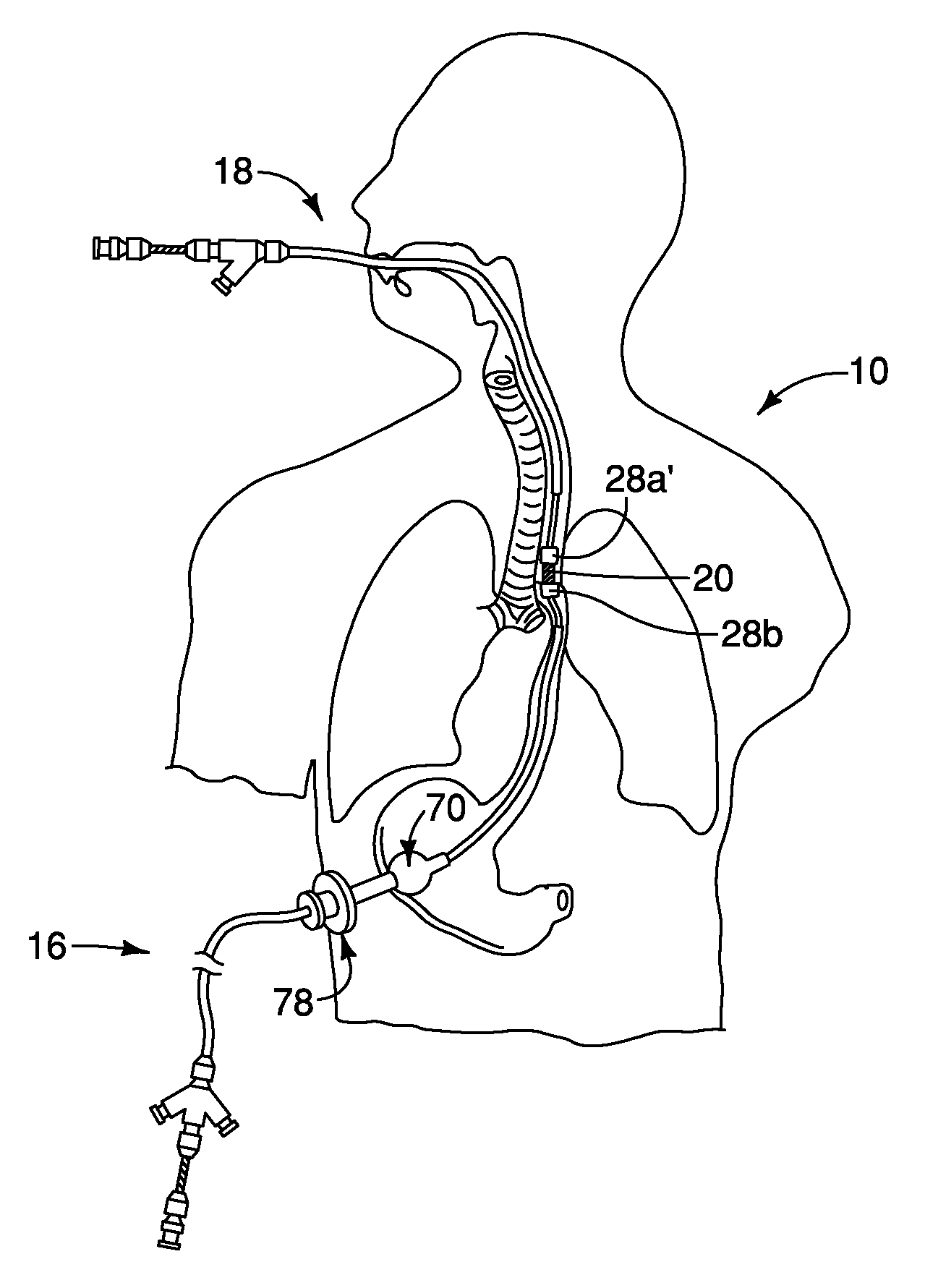Pediatric esophageal atresia magnetic anastomosis system
a magnetic anastomosis and esophageal atresia technology, applied in the field of medical devices, can solve the problems of affecting the ability of caregivers to nurture infants, drooling, coughing, and excessive drooling, and achieve the effect of lengthening the upper and lower esophageal sacs
- Summary
- Abstract
- Description
- Claims
- Application Information
AI Technical Summary
Benefits of technology
Problems solved by technology
Method used
Image
Examples
Embodiment Construction
[0027]The invention is described with reference to the drawings in which like elements are referred to by like numerals. The relationship and functioning of the various elements of this invention are better understood by the following detailed description. However, the embodiments of this invention are not limited to the embodiments illustrated in the drawings. It should be understood that the drawings are not to scale, and in certain instances details have been omitted which are not necessary for an understanding of the present invention, such as conventional fabrication and assembly. Additionally, it should be noted that, as used herein, the term “magnet” refers to a material that is naturally surrounded by a magnetic field and has the property of attracting iron or steel.
[0028]As used in the specification, the terms proximal and distal should be understood as being in the terms of a physician delivering the stent to a patient. Hence the term “distal” means the portion of the devi...
PUM
 Login to View More
Login to View More Abstract
Description
Claims
Application Information
 Login to View More
Login to View More - R&D
- Intellectual Property
- Life Sciences
- Materials
- Tech Scout
- Unparalleled Data Quality
- Higher Quality Content
- 60% Fewer Hallucinations
Browse by: Latest US Patents, China's latest patents, Technical Efficacy Thesaurus, Application Domain, Technology Topic, Popular Technical Reports.
© 2025 PatSnap. All rights reserved.Legal|Privacy policy|Modern Slavery Act Transparency Statement|Sitemap|About US| Contact US: help@patsnap.com



